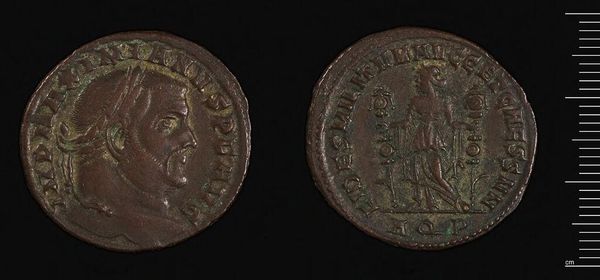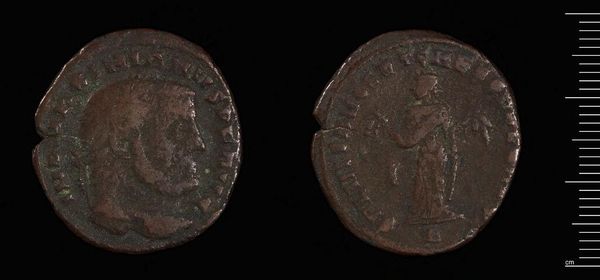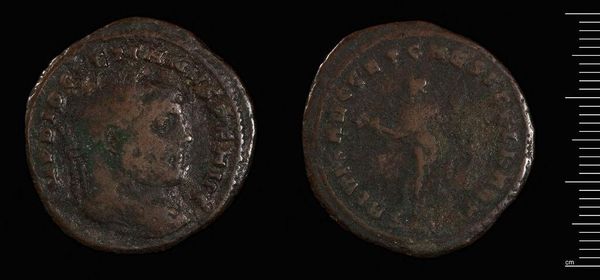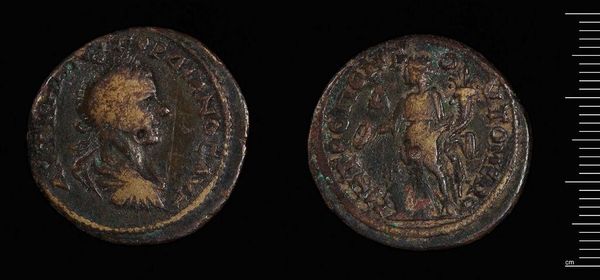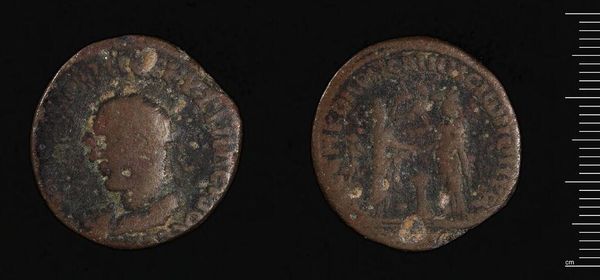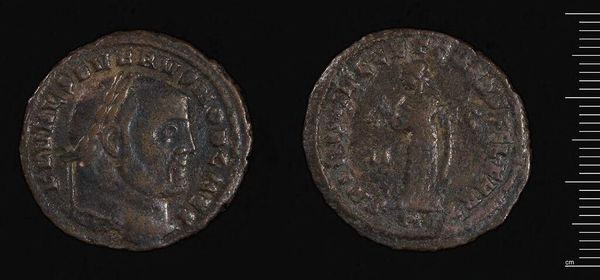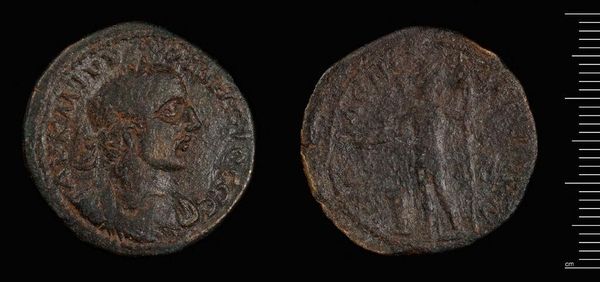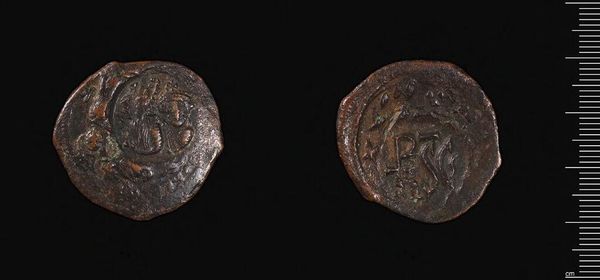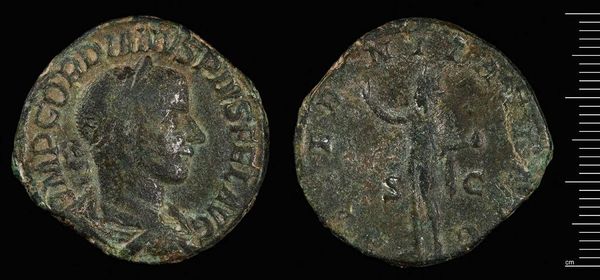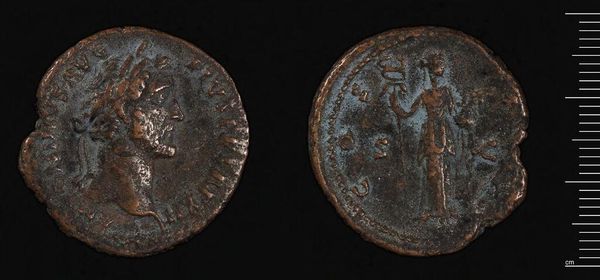
Dimensions: 8.73 g
Copyright: CC0 1.0
Curator: This object is a follis of Diocletian, likely dating from the late 3rd or early 4th century CE, and minted in Carthage. Editor: It looks so worn, yet those faint figures evoke a kind of enduring power. I wonder about the copper content and how it affected the coin's survival. Curator: Indeed. That wear is a testament to its history. The portrait of Diocletian would have served as a potent symbol of imperial authority. The other figure represents a deity, perhaps Roma or a local Carthaginian god. Editor: So, more than just currency, it’s a political statement hammered out with brute force and then circulated for everyday transactions. Where did the metal come from, and who labored to make these? Curator: Precisely. It visually connected the emperor to both divine and earthly power. Editor: Thinking about its physicality really brings the past to life for me. The coin’s creation involved resources, labor, and an intent to communicate power. Curator: For me, it's a potent reminder of the weight of symbols, how they persist and transform over time.
Comments
No comments
Be the first to comment and join the conversation on the ultimate creative platform.
